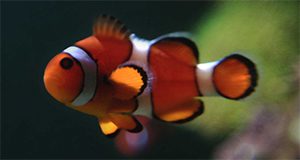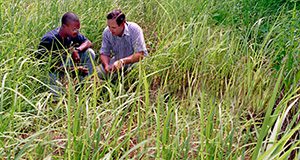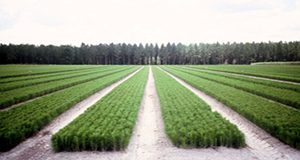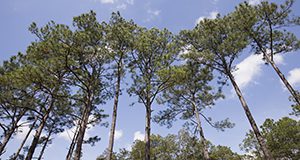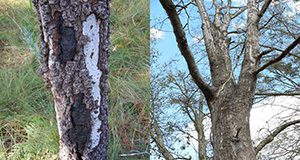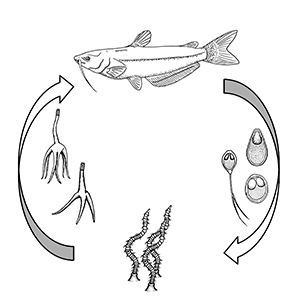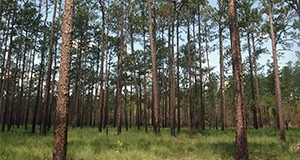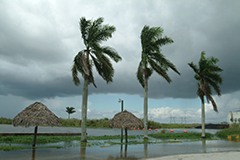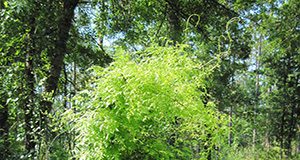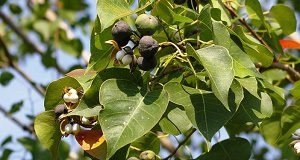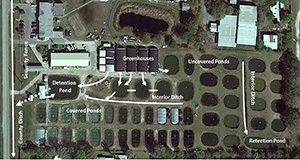Color in fish is mostly genetically determined, but they are unable to produce red, orange, yellow, green, and some blue colors themselves.They get these colors from their food. Fish raised in aquariums or recirculating water systems without pigment supplementation in their diet will fade and lose their vibrant hues. Even in ponds, dietary pigment supplementation can make fishes brighter and more variably colored, just like their wild counterparts. This 6-page fact sheet written by F. A. Chapman and R. D. Miles and published by the UF/IFAS School of Forest Resources and Conservation, Program in Fisheries and Aquatic Sciences, addresses how ornamental fish get their colors and provides a list of ingredient sources for diets that can be used to enhance and intensify fish colors.
Tag: School of Forest Resources and Conservation
Marking First Thinnings in Pine Plantations: Potential for Increased Economic Returns
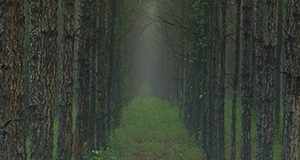
This 3-page fact sheet written by Byron Love, Michael Andreu, and Chris Demers and published by the UF/IFAS School of Forest Resources and Conservation summarizes a study to determine whether landowners may gain increased economic returns if they mark the first thinning in a southern pine stand. The study found that marking can indeed bring higher revenue at final harvest. The greater number of high-quality and faster-growing trees remaining after a marked thinning is the main reason for immediate and future increases in value.
http://edis.ifas.ufl.edu/fr410
Storage of Decapsulated Artemia (Brine Shrimp)
Artemia (brine shrimp) are good food for larval fish, but they have to be removed from their shells before many species can eat them. The process can be time- and labor-intensive, especially since it is often performed every day. Fortunately, this 3-page fact sheet written by Jason Broach, Cortney Ohs, and Isaac Lee and published by the UF/IFAS School of Forest Resources and Conservation, Program in Fisheries and Aquatic Sciences describes a method for storing a 7-day supply of the brine shrimp that will allow the task to be done just once a week.
http://edis.ifas.ufl.edu/fa203
Biology and Control of Cogongrass (Imperata cylindrica) in Southern Forests
Cogongrass (Imperata cylindrica (L.) Beauv.) is a Southeast Asian warm-season perennial grass species that has spread to all continents except Antarctica. It is considered among the worst problematic weeds on a global scale. Control of cogongrass is difficult, especially in forests. This 6-page fact sheet written by Patrick J. Minogue, Brent V. Brodbeck, and James H. Miller and published by the UF/IFAS School of Forest Resources and Conservation presents recommendations for control strategies that will work in mixed pine-hardwood forests and pine forests.
http://edis.ifas.ufl.edu/fr411
Genetically Improved Pines for Reforesting Florida's Timberlands
Just as farmers plant the best-available varieties of crops that have been developed through many generations of breeding, forest landowners should plant the best-available genetically improved varieties of pines for reforestation of their timberlands. This 8-page fact sheet written by Timothy L. White, Mary L. Duryea, and Gregory L. Powell and published by the UF/IFAS School of Forest Resources and Conservation explains how planting genetically improved varieties of pines can increase the productivity, health, and value of reforested Florida timberlands.
edis.ifas.ufl.edu/fr007
Florida Trees Store Carbon in Forests and Wood Products
Trees store carbon as they grow and produce wood. Carbon, and carbon storage in particular, have become important topics as policymakers, scientists, and industry leaders consider how to address the increasing amount of CO2 in our atmosphere. Because it changes the composition of the atmosphere, CO2 is a leading contributor to climate change. This 4-page fact sheet written by Adam Maggard, Leslie Boby, and Martha Monroe and published by the UF/IFAS School of Forest Resources and Conservation explains how storing carbon in living trees and in long-lasting wood products such as lumber and furniture can reduce atmospheric CO2. Florida’s forest and wood-product industries are worth billions of dollars. Clean water, wildlife, and other benefits add to the value and importance of these forests.
http://edis.ifas.ufl.edu/fr409
Biscogniauxia (Hypoxylon) Canker or Dieback in Trees
Biscogniauxia canker or dieback is a common contributor to poor health and decay in a wide range of tree species growing in many different habitats, such as forests, parks, green spaces, and urban areas, in Florida. This disease is caused by several species of fungi in the genus Biscogniauxia (formerly Hypoxylon). These pathogens do not typically harm healthy and vigorous trees, but once they infect trees under stress from drought, root disease, soil compaction, construction damage or other causes, they can quickly colonize the tree. Once a tree is infected and fruiting structures of the fungus are evident, the tree is not likely to survive, especially if the infection is in the trunk. This 3-page fact sheet written by Claudia Paez and Jason Smith and published by the UF/IFAS School of Forest Resources and Conservation explains the pathogen’s biology and lists signs and symptoms as well as control measures and ways to keep trees healthy to resist infection.
http://edis.ifas.ufl.edu/fr407
Myxosporidiosis (Myxozoan Infections) in Warmwater Fish
This 8-page publication written by Justin Stilwell and Roy P. E. Yanong and published by the Program in Fisheries and Aquatic Sciences of the School of Forest Resources and Conservation discusses myxozoans (multi-celled parasites of marine and freshwater invertebrates and fishes). It provides examples of myxozoans that infect aquarium and warmwater fish; describes them and shows their sizes, shapes, and structures; explains their life cycles and how they are transmitted; presents some methods for diagnosing infections in fish; and gives advice for treatment, prevention, and control of myxozoan infections.
http://edis.ifas.ufl.edu/fa201
Florida's Forest Stewardship Program: An Opportunity to Manage Your Land for Now and the Future
The Forest Stewardship Program encourages landowners to manage their lands for multiple natural resources, increases public awareness of the importance of Florida’s forestlands, and improves cooperation among natural resource agencies and organizations to meet Florida’s forest resource conservation and management needs. This three page fact sheet written by Mary Duryea, Deborah McGrath, Chris Demers, and Anthony Grossman and published by the School of Forest Resources and Conservation explains the program and its benefits and describes how to become a forest steward.
http://edis.ifas.ufl.edu/fr408
The Value of Private Non-Industrial Forestland for Wildlife Species Conservation
Animals in Florida provide a variety of benefits to people, from recreation (fishing, hunting, or wildlife viewing) to protection of human life and property (oysters and corals provide reef structures that help protect coasts from erosion and flooding). By measuring the economic value of these benefits, we can assign a monetary value to the habitats that sustain these species and assess the value that is lost when development or other human-based activities degrade animal habitat. This 5-page fact sheet written by Shelly Johnson, Timm Kroeger, Josh Horn, Alison E. Adams, and Damian C. Adams and published by the School of Forest Resources and Conservation presents the results of a study that assessed the value of protecting five animal species in Florida and showed the economic value of protecting animal habitat.
http://edis.ifas.ufl.edu/fr405
Risk Perception and Needs: Defining Extension's Climate Change Adaptation Role
Third in a series on climate change communication for Extension professionals, this 7-page fact sheet written by Mark Megalos, Martha C. Monroe, and Claire Needham Bode and published in April 2017 by the UF School of Forest Resources and Conservation provides strategies for overcoming challenges in communicating about climate change.
http://edis.ifas.ufl.edu/fr403
Timber Production in a Working Forest Context
Working forests are private forests managed not just for timber production but also for a host of valuable ecosystem services like providing for recreation, maintaining habitat for wildlife, and maintaining a healthy watershed. Timber production is an essential ecosystem good or service that supports a number of important industries and provides jobs in Florida. This 6-page fact sheet summarizes the results of several studies to help forest landowners and other stakeholders understand how multiple-use management affects both timber production and other ecosystem services.
http://edis.ifas.ufl.edu/fr406
Carbon Stocks on Forest Stewardship Program and Adjacent Lands
Nonindustrial private forestlands in Florida provide many environmental benefits, or ecosystem services. Ecosystem services are benefits from nature that are directly enjoyed, consumed, or used by humans, such as water quality improvement or protection, recreation, biodiversity, and even timber. Another benefit from forests that is gaining interest is their ability to store carbon through the photosynthetic capture of carbon dioxide, a greenhouse gas, in tree, plant, and soil biomass. The carbon dioxide that is stored over the life of a forest, called carbon stocks, is not only important for mitigating greenhouse gas contributions to climate change, but it can also be valued in several markets and incorporated into environmental policy instruments. This 5-page fact sheet was written by Nilesh Timilsina, Francisco J. Escobedo, Alison E. Adams, and Damian C. Adams and published by the UF Department of School of Forest Resources and Conservation April 2017.
http://edis.ifas.ufl.edu/fr384
Strategies for Communicating Climate Change to Extension Audiences
Second in a series on climate change communication for Extension professionals, this 5-page fact sheet written by Claire Needham Bode, Martha C. Monroe, and Mark Megalos and published in January 2017 by the UF School of Forest Resources and Conservation provides strategies for overcoming challenges in communicating about climate change.
http://edis.ifas.ufl.edu/fr402
Control y Biologia del Helecho Trepador Japones (Lygodium japonicum )
El helecho trepador japonés es una enredadera invasiva no nativa de los Estados Unidos (EEUU) que fue introducida aproximadamente en 1900. Este helecho se ha establecido a lo largo de la llanura costera del sudeste de los EEUU desde los estados de Norte y Sur Carolinas hasta Texas y Arkansas. El helecho trepador japonés es nativo de Asia, en particular Japón así como al oeste de la cordillera de los Himalayas. El área de establecimiento se ha expandido desde la región de la costa del Golfo de México incluyendo TX, AR, LA, MS, AL, FL, GA, SC, NC, y PA. En Florida, el helecho trepador japonés está ampliamente distribuido en el norte y al oeste del estado, mientras que en la parte centro-sur su abundancia es variable. Este helecho está adaptado a lugares soleados o con sombra, y por lo general se localiza en suelos húmedos como los bordes de los pantanos, lagos, arroyos y bosques de tierras altas.
This 6-page fact sheet was written by Elsa D. Chevasco, Patrick J. Minogue, Kimberly K. Bohn, and Francisco Escobedo, and published by the UF Department of School of Forest Resources and Conservation, November 2016.
http://edis.ifas.ufl.edu/fr344
Improving, Restoring, and Managing Natural Resources on Rural Properties in Florida: Sources of Financial Assistance
Interested in conserving natural resources, such as wildlife habitat, or protecting the agricultural heritage of your land? Both federal and state governments have technical and financial assistance programs to help rural landowners achieve natural resource goals. These challenges are addressed through land rentals, technical assistance, cost-shares, and incentive payments and include both time-limited and permanent land-use options.
This 8-page fact sheet written by Chris Demers, Martin B. Main and Mark E. Hostetler and published by the UF School of Forest Resources and Conservation informs landowners about government programs available to help conserve natural resources.
http://edis.ifas.ufl.edu/fr156
Coral Reef Conservation Strategies for Everyone

Corals are small animals related to jellyfish. Large groups of these animals live together and form huge interconnected colonies called reefs. Coral reefs are some of the most diverse ecosystems on the planet; an essential habitat for a wide variety of animal and plant species. About 400 million people rely on coral reef fish as a source of protein; about 6 million people make a living by catching and selling coral reef fish and invertebrates; tourism activities like SCUBA diving and snorkeling provide revenue of US$9.6 billion per year; and reefs reduce wave energy by 97%, helping to protect 197 million people in coastal areas from beach erosion, wave energy, and flooding. Learn how you can help protect these fragile, essential ecosystems from threats in this 7-page fact sheet written by Kathryn E. Lohr and Joshua T. Patterson and published by the Program in Fisheries and Aquatic Sciences, School of Forest Resources and Conservation.
edis.ifas.ufl.edu/FA199
Controlling Invasive Exotic Plants in North Florida Forests
Of the more than 4,000 known plant species growing in Florida, approximately 30% are not native to Florida or the Southeast, and in the US invasive exotic species cost an estimated $120 billion each year in damages. Early detection and removal of invasive plants is the key to successful management. This publication describes many of the current methods used in north Florida forest operations to manage invasive exotic plants. It also provides references for additional sources of information. Written by Chris Demers, Patrick Minogue, Michael Andreu, Alan Long, and Rick Williams.
http://edis.ifas.ufl.edu/fr133
Preventing Escape of Non-Native Species from Aquaculture Facilities in Florida, Part 1: General Considerations and Regulations
Aquaculture is an important and diverse segment of the agricultural economy in Florida. Ornamental, live bait, food finfish, and other segments of this industry culture and trade in non-native species. Escape or release of these non-native cultured organisms is an environmental and legal concern in Florida and therefore a key consideration in aquaculture farm construction and operation. This 7-page fact sheet is the first in a four-part series devoted to educating industry and other stakeholders on the importance of preventing the escape of non-native species from aquaculture facilities as well as strategies for non-native species containment and regulatory compliance. Written by Quenton M. Tuckett, Carlos V. Martinez, Jared L. Ritch, Katelyn M. Lawson, and Jeffrey E. Hill and published by the School of Forest Resources and Conservation Program in Fisheries and Aquatic Sciences, it introduces the series, explains why non-native species containment is important, provides information on regulations, including the Florida Aquaculture Best Management Practices rule, describes the BMP inspection process, and provides advice on achieving compliance with these important regulations.
http://edis.ifas.ufl.edu/fa195
Preventing Escape of Non-Native Species from Aquaculture Facilities in Florida, Part 2: Facility Evaluation Strategies
Understanding how non-native species escape or are accidentally released helps producers better design and operate aquaculture facilities to reduce or prevent escape. Active management of critical points where escape is possible will help achieve regulatory compliance. This 6-page fact sheet written by Jeffrey E. Hill, Quenton M. Tuckett, Carlos V. Martinez, Jared L. Ritch, and Katelyn M. Lawson and published by the School of Forest Resources and Conservation Program in Fisheries and Aquatic Sciences is the second in a four-part series devoted to educating industry and other stakeholders on the importance of preventing the escape of non-native species from aquaculture facilities as well as strategies for non-native species containment and regulatory compliance. It describes farm layouts, explains how fish escape, and outlines a process that aquaculturists can complete to identify potential escape points on their farms.
http://edis.ifas.ufl.edu/fa196
